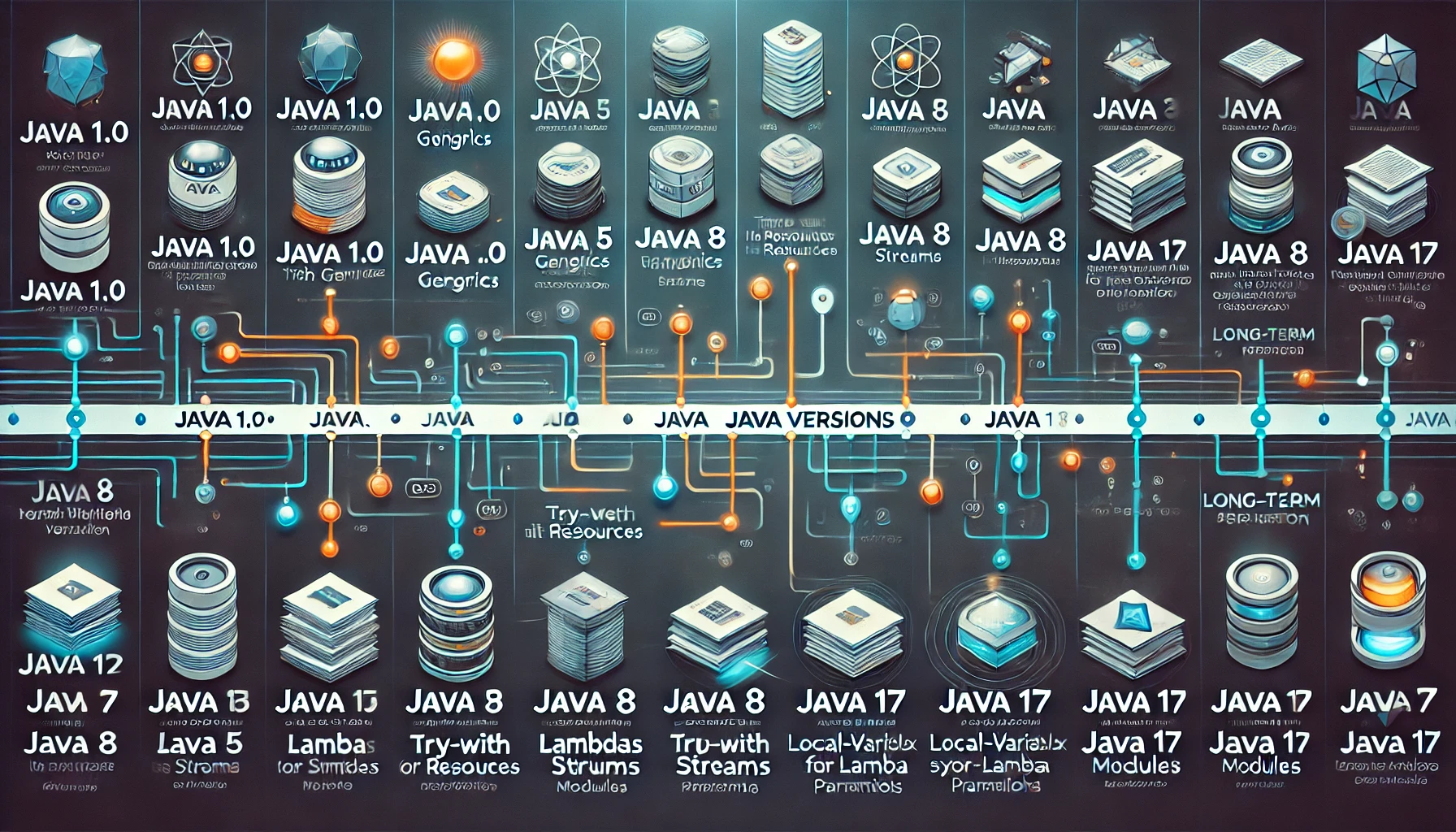Java Versions
Rohit Kumar
•
27 July 2025
•
3 mins

Lets explore the key Java features introduced across various versions:
Exploring Java Features Across Versions
Java, one of the most popular programming languages, has evolved significantly since its inception. Each version of Java brings new features and enhancements, helping developers write more efficient and maintainable code. In this post, we’ll explore some of the notable features introduced in different Java versions.
Java 5 (2004) - The Generics Revolution
Java 5 was a groundbreaking release that introduced several key features:
- Generics: Allowed developers to create classes, interfaces, and methods with type parameters, enhancing type safety and reducing the need for type casting.
- Enhanced for loop: Simplified iterating over collections and arrays.
- Autoboxing/Unboxing: Automatically converted between primitive types and their corresponding wrapper classes, streamlining code.
- Enumerations (Enums): Provided a way to define a fixed set of constants.
Java 7 (2011) - The Productivity Boost
Java 7 introduced features aimed at improving developer productivity and code readability:
- The Diamond Operator (<>): Simplified the instantiation of generic types by reducing boilerplate code.
- Try-with-resources: Simplified resource management by automatically closing resources like files and sockets.
- String in Switch: Allowed the use of strings in switch statements, improving code readability.
Java 8 (2014) - The Functional Leap
Java 8 was one of the most significant updates, bringing functional programming to the forefront:
- Lambda Expressions: Enabled a concise way to represent anonymous functions, making code more readable and expressive.
- Streams API: Introduced a powerful way to process collections of data in a functional style, supporting operations like map, filter, and reduce.
- Optional Class: Helped in handling null values more gracefully, reducing the likelihood of
NullPointerException. - Default Methods: Allowed developers to add new methods to interfaces without breaking existing implementations.
Java 9 (2017) - The Modular Era
Java 9 focused on modularity and performance improvements:
- Java Platform Module System (JPMS): Introduced the concept of modules, enabling better encapsulation and dependency management.
- JShell (REPL): Provided an interactive tool for quickly testing Java code snippets.
- Stream API Enhancements: Added methods like
takeWhile,dropWhile, anditerateto the Streams API for more control over stream processing.
Java 10 (2018) - The Local Variable Type Inference
Java 10 brought a simple yet impactful feature:
- Local Variable Type Inference (var): Allowed developers to declare local variables without explicitly specifying their type, leading to cleaner and more readable code.
Java 11 (2018) - The Long-Term Support Release
Java 11, a long-term support (LTS) release, added several important features:
- New String Methods: Introduced methods like
isBlank(),lines(), andrepeat()to simplify string manipulation. - HTTP Client: Provided a new, more flexible HTTP client API that supports HTTP/2 and WebSocket.
- Lambda Parameter Type Inference: Enhanced the
varkeyword to be used in lambda expressions.
Java 14 (2020) - Pattern Matching and More
Java 14 continued the trend of improving developer experience:
- Pattern Matching for
instanceof: Simplified type checks by allowing direct casting after a type test. - Records (Preview): Introduced a concise way to create data-carrying classes, reducing boilerplate code.
Java 17 (2021) - The Modern LTS
Java 17, another LTS release, consolidated many features:
- Sealed Classes: Allowed developers to restrict which classes can extend or implement a particular class or interface, providing more control over the class hierarchy.
- Pattern Matching for Switch (Preview): Extended pattern matching to switch expressions and statements, making them more powerful and flexible.
- Enhanced Pseudo-Random Number Generators: Provided new interfaces and implementations for random number generation, improving flexibility and performance.
Java 21 (2023) - The Latest Innovation
Java 21 is the most recent version, packed with powerful features:
- Virtual Threads (Preview): Introduced a lightweight, high-performance threading model that simplifies concurrent programming.
- Structured Concurrency (Preview): Aimed to streamline concurrent programming by managing multiple tasks as a single unit of work.
- Record Patterns (Preview): Extended pattern matching capabilities, allowing patterns to be matched within records.